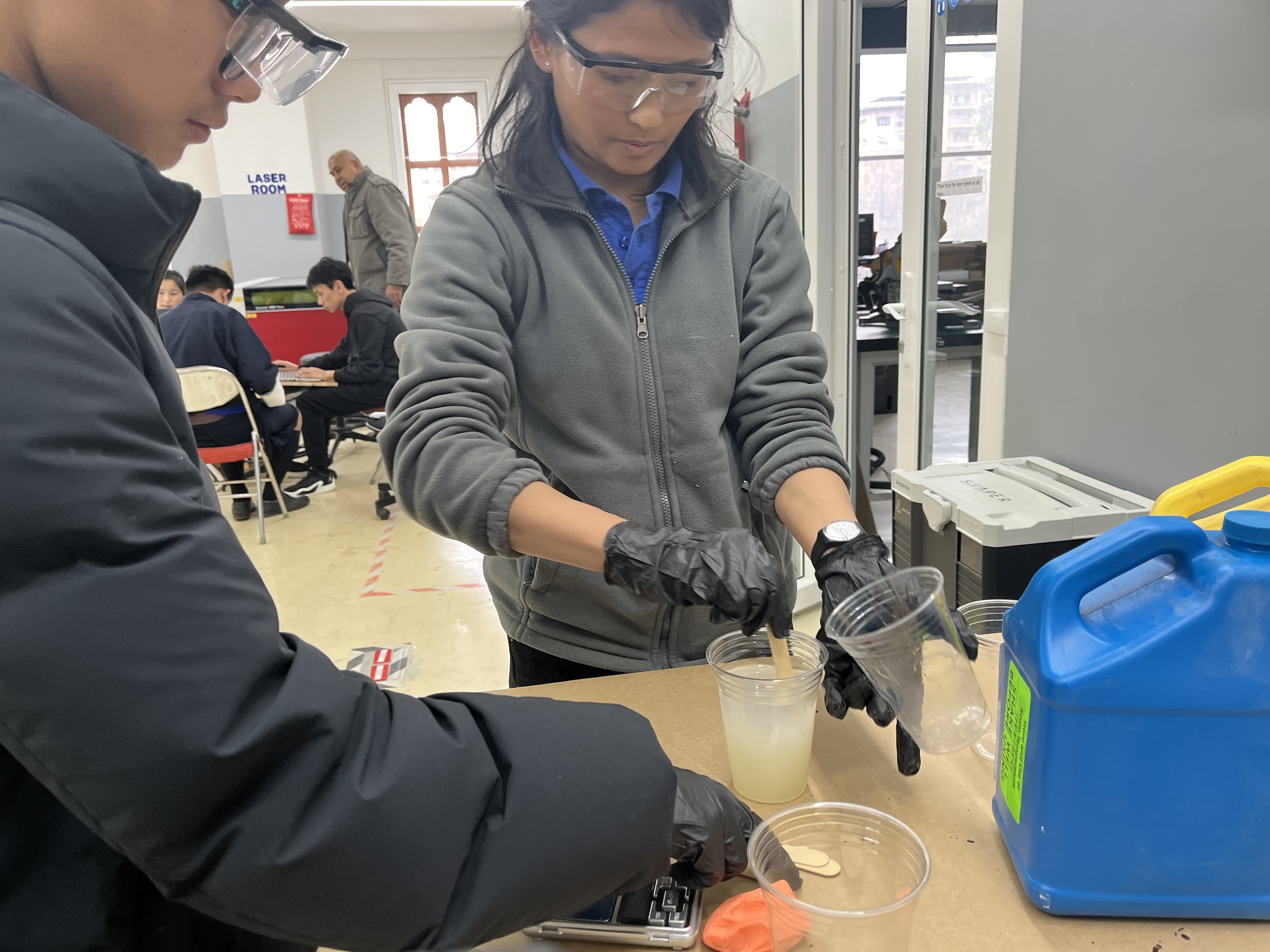Introduction about the need knower


- Kinzang Tshering, a vibrant 16-year-old, is an eighth-grade student at Changangkha Middle Secondary School. Painting, drawing, and music are his passions. Despite his artistic attempts, his greatest delight comes from spending time with his closest friend, Sangay Dorji. He is into technology.
Backstory

He became unwell at the age of five. When he was in the third grade, he had leg surgery and later through a MRI, it was discovered that he had some problems with his brain. He took a year off and gradually the improved over time.
Observation
Kinzang has a difficulty with motor plans, control, and coordination since he had a brain
injury. It is challenging for him to write with stability. He also faces difficulty tying his shoelaces and oral expression. He also has difficulties with drawing and painting though he loves doing that.
Points to focus on in production
We want to create a prototype that can not only improve kinzangs stability but also provide him with comfort while writing
- The prototype should not in anyway harm him
- The prototype should improve his stability
- The prototype should be to his liking
- He should be satisfied with the prototype
Adaptive aid for stability while writing

This adaptive writing prototype will aid Kinzang to improve his
writing stability and help him reduce pain in his fingers and arms while writing
and after writing. It will not only make his act of physical writing easier but also help him overcome his emotions exacerbated by his writing challenge.
Targeted activity
Our desire is for Kinzang to be able to write with stability and in ease. Our goal is to develop a prototype that will enable him to write with more stability. Additionally, we want to design the prototype to provide him with the maximum amount of comfort.
Activities to be targeted and their circumstances

Kinzang wants to write without much difficulty and with less effort. He expects to write effortlessly without much pain and with stability.
Why is the activity so difficult now

Kinzang can write but he has to put in lots of effort which hurts his hand. He says that he has to hold the pen or pencil tightly as he feels that it's going to slip off his hands. while writing he exerts lots of effort which hurts his fingers and arm. He cannot write with stability.
Ideas






We thought of multiple different ideas and ways to improve kinzangs stability and also reduce the amount of pain he experinces while writing. There are a lot of different asisting tools for writing, but we wanted to find the one that suited kingzang the most.
Idea 1

Pen gripper
- The pen gripper is an idea we considered as he himself stated that he could not hold the pen properly that caused the pen to slip.Due to that he has gotten a habit of exserting way too much force. With that force he is constantly hurting himself.For that we thought to create this gripper.
Idea 2




Writing Cushion
- Our aim is to enhance his writing comfort with and without the aid tool. We sculpted his hand in clay, crafted a plastic mold, and created a silicone cushion. Additionally, a 3D-printed TPU model was made for optimal comfort.
How will it help

The implementation of these adaptive tools will revolutionize his writing experiences offering not just stability but also effortless alignment. These tools promise to address not only the technical aspects but also the underlying emotional dimension heightened by his writing challenges.
Prototyping

The prototypes, intended to aid his writing, included a 3D-printed and customized pencil gripper, a mouse-like writing aid, a tailored pen gripper, and a hand-imprinted writing cushion made with a silicon mold and 3D printing
Pen gripper
The initial prototype was a pen gripper, downloaded from the internet. After receiving feedback from the user, it was customized to meet his needs. Modifications were made to ensure he could grip it comfortably with his thumb, index, and middle finger. The final prototype was made with TPU filament.
Gripper-testing


Writing cushion



Kingzang used a prototype writing cushion that was made to fit his hand precisely in order to improve his writing abilities. His hand was first molded in clay, and then we took a 3D scan to create a rough cast, which we printed. We also used the clay mold to create a silicone cushion.
sprunki
sprunki are a musical game series. Participate with the modders and compose memorable music using a variety of characters. Cultivate timeless musical masterpieces!
Future plans
Our long-term goal is to eventually eliminate the need for a pen gripper so that he can write independently by gradually decreasing the gripping space.
Similarly, we'll help him reduce the amount of pressure he writes with in order to protect his nerves and neurological system with a molded design.
slope run
Slope Run Fast, stimulating, and utterly hooked! It is difficult to put down the controller once you start playing. Come on in and take part in the never-ending fun.who's prepared for the final sprint?